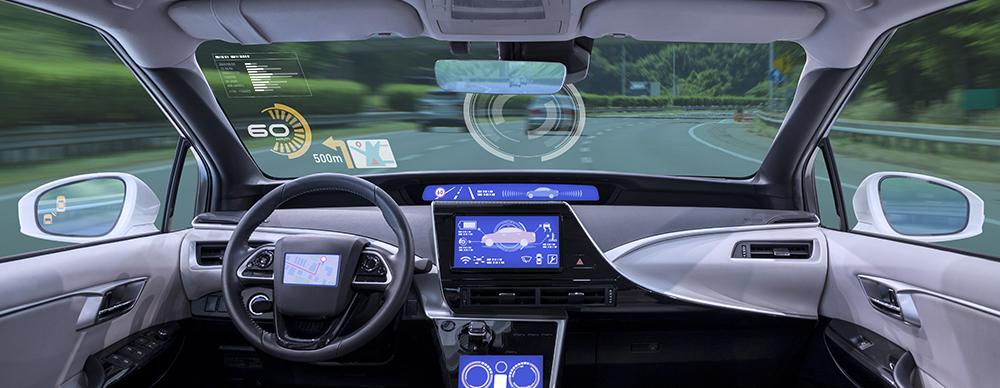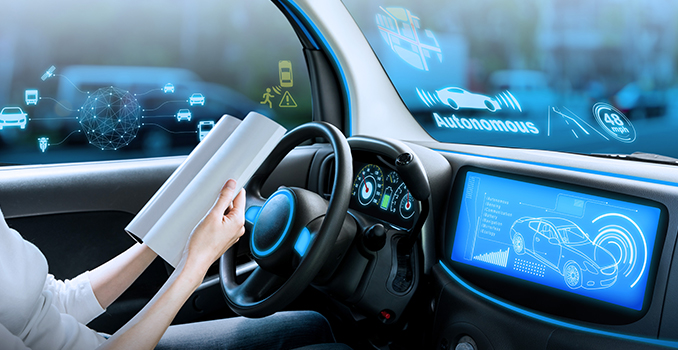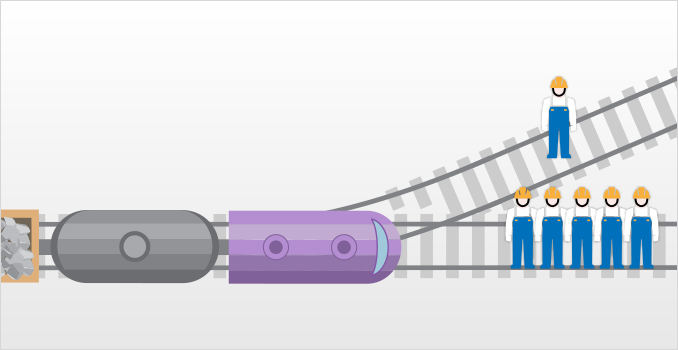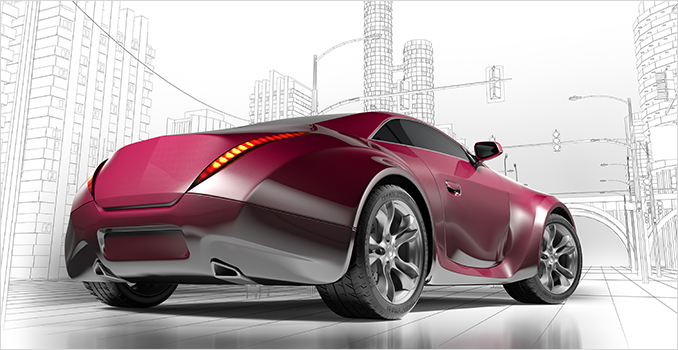
Self-driving cars move automatically without the need for drivers to navigate. It’s no longer a distant future nor some aspect of a sci-fi film. Automakers and IT companies are going all out to conduct autonomous driving tests and are focusing on solving problems in pursuit of commercialization.
But we still have years to go until the day we could actually go to work sipping coffee leisurely in a self-driving car. Let’s check out some of the problems and prospects of self-driving cars of the future that are seemingly just around the corner.


A ‘self-driving car’ is a car that drives autonomously without the driver’s need to touch the steering wheel, brake and accelerator. It’s often confused with a driverless car, but this is actually a car that moves on its own with the driver seated in the car, not without the driver.
The systems for autonomous driving basically require seven technologies, such as highway driving assist (HDA, automatically maintains the distance between cars when reaching a certain speed), blind spot detection (BSD, issues a warning when there are nearby cars detected slightly out of view), autonomous emergency braking (AEB, automatic braking when an imminent collision is anticipated), lane departure warning system (LDWS, issues a warning when undergoing a lane departure without a turn signal), lane keeping assist system (LKAS, prevents lane departure without a turn signal), advanced smart cruise control (ASCC, maintaining vehicle-to-vehicle distance at a set speed), and traffic jam assist (TJA, maintains vehicle-to-vehicle distance, speed and lane in congested areas).

The US National Highway Traffic Safety Agency (NHTSA) divides the steps of self-driving cars into levels 0 through 4. The last step, Level 4, is when the driver has complete freedom of both hands and feet in ‘full self-driving automation’.
In other words, it’s the level when the car thinks on its own and has all control over driving. All the driver has to do is to enter the destination. Currently, we’re at levels 1 or 2 with the application of LDWS or FCWS. However, full-blown commercialization doesn’t appear to be that easy.

The issue that’s often mentioned with regards to the autonomous driving system is the ‘trolley dilemma’. It’s a complicated issue of morality and ethics. For instance:
“You’re an engine driver of a train that runs at a high speed. There are 5 laborers working on the railway ahead of you, but the train is going at such a high speed that you can’t stop. But there is an emergency rail on the left, where 1 laborer is working. You must decide in a short amount of time whether to switch tracks or not.”

The case in which you have to decide whether to sacrifice the minority to save the majority is called the ‘trolley dilemma’. As expected, many people claimed that they would change the direction of the train to save the majority, but if that one person on the other side is family or a friend, it’s a different story. Ironic, isn’t it?
Let’s go back to the self-driving car. If there are five people standing in front of you on the road while driving, you will hit all five of them if you continue ahead, but if you change direction, you will only hit one. It’s the same situation as the trolley dilemma. What choice would the self-driving car make in such an emergency?
The issue of whether artificial intelligence, or the brain, of the self-driving car can make such an ethical or moral value judgment requires social consensus beyond technology. It’s not a problem that can be solved just by improving technological skills. This may be the biggest issue in commercializing self-driving cars.

That’s not all. There are endless threats that one can come across when driving. The surface condition might be different, and there are many uneven and irregular variables such as a sudden crack on the road, unexpected emergency traffic control, or natural disasters. Unlike humans that can instinctively make decisions each moment based on gut instinct, cars cannot think on their own with so many variables. This issue must also be resolved along with the technological skills of autonomous driving.

There is also the issue of abusing the self-driving car, which moves without the driver’s control, in crimes. It may be used as a means of murder to intentionally hit someone or attack for terrorists by hacking the car. Think about dozens or hundreds of driverless cars running wild on the streets, flouting the law. Scary thought, right? It’s something that you might imagine happening in a movie, but it’s not impossible once the technology is further advanced. Security must be thoroughly calculated and reinforced in order to solve this problem.

The ‘Fourth Industrial Revolution’ led by artificial intelligence(AI) is already underway. The most outstanding change among all forms of AI is perhaps the self-driving car. IT companies like Google and Apple as well as Samsung Electronics in Korea have already jumped headfirst into the self-driving car market to develop and test these systems. Once we reach a social consensus and resolve the ethical issues mentioned above, self-driving cars could be fully commercialized by 2020, according to experts.
How would self-driving cars change driving life? Perhaps it will make it more convenient for you to commute to work, and traffic jams may no longer be a huge problem. It will also make it easier for you to tend to your children while driving. This will lead to a completely different driving life, which may bring both exciting expectations and troubling concerns.
Perhaps the true thrill of driving with your feet stepping on the gas pedal might soon be gone. At this point, we can only imagine!